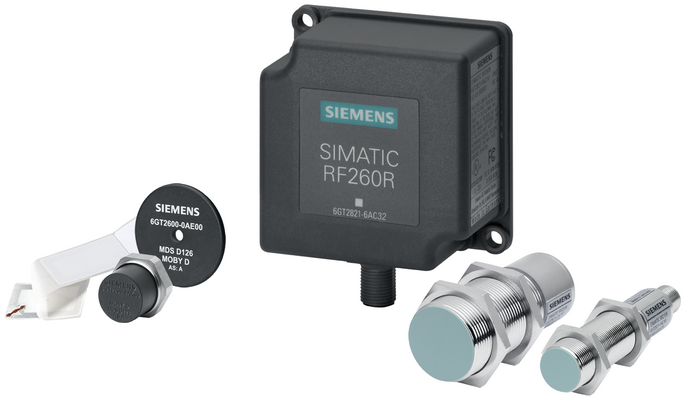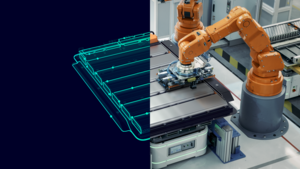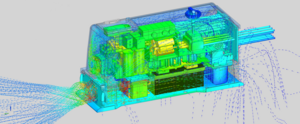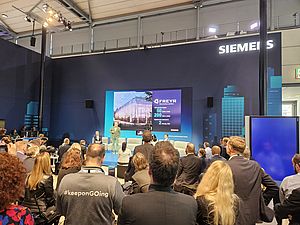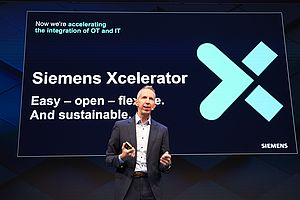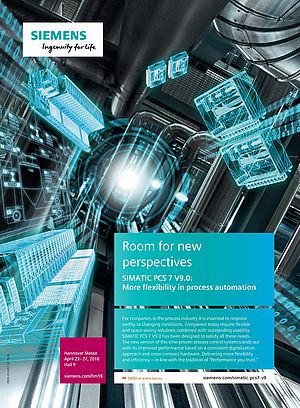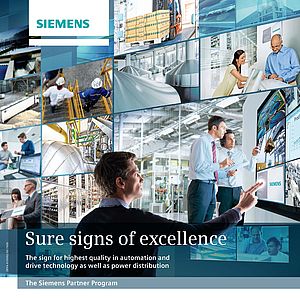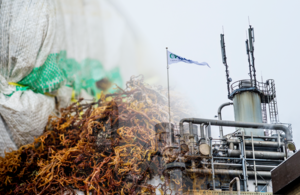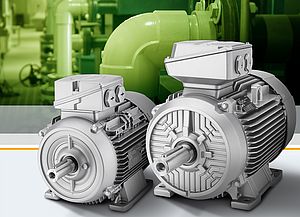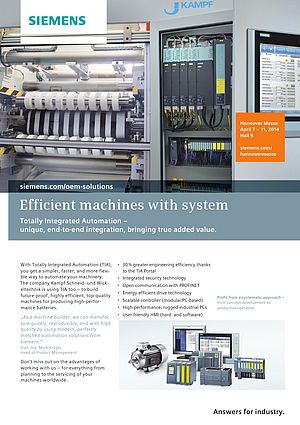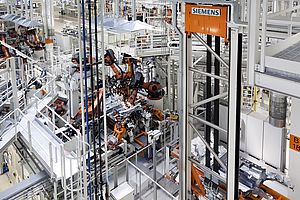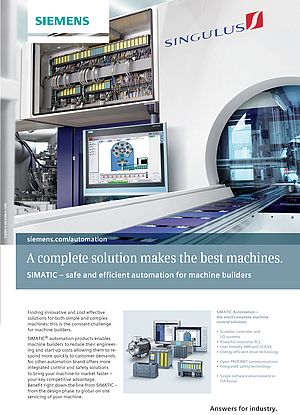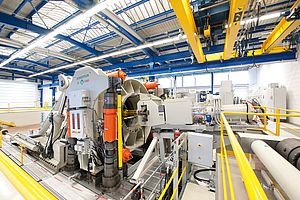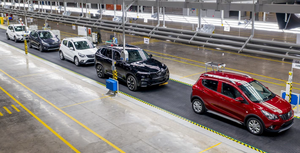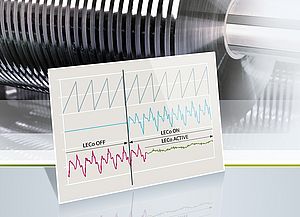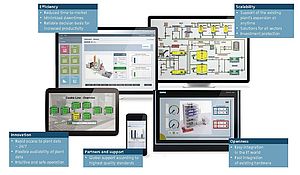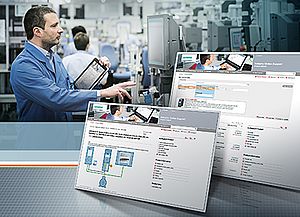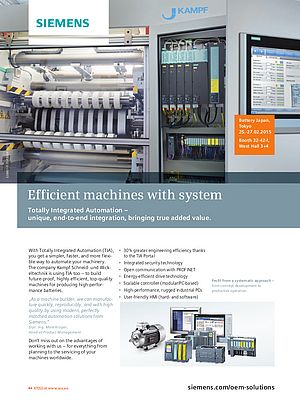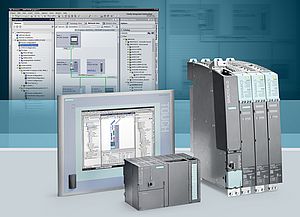Leading providers of automation products have joined together in a consortium and defined an interface designated IO-Link for end devices - enabling an easy use across all controller and sensor/actuator manufacturers. With the identification system SIMATIC RF200 IO-Link, Siemens is offering the proven RFID readers with the connection variant IO-Link, which can thus be employed with all popular fieldbuses and controllers. Furthermore, this technology is very easy to operate and gets customers into a good cost position.
Easy to use
With IO-Link, process data as well as parameter and diagnostics data are transferred. Which raises the question: How can this still be easy to use?
For comparison, let us take a new smart phone that you have just purchased. You turn it on and can immediately make calls. Only if you want to use a more complex function, for example GPS navigation, do you have to familiarize yourself with the function to handle it safely.
It is just the same with the identification system SIMATIC RF200 with IO-Link. If only the UID (transponder number) of the transponder is required, the IO-Link reader only needs to connected to the IO-Link master using the ready-to-connect, three-conductor, standard cable. After switching on, the IO-Link master only has to be told that an unknown IO-Link device is connected to its I/O port. Via the autosense feature of IO-Link, the IO-Link master automatically recognizes the mode of operation of the RF200 reader. If a transponder is brought into the reading field of the reader, the eight bytes of data of the UID are immediately shown in the process image. Entirely without programming or parameterization, the result is ready for further processing. Achieving this commissioning was easy, fast and complete - without programming knowledge of the controller.
The offline configuration via the Port Configuration Tool (PCT) works just as easily. For each IO-Link device, the manufacturer provides a description (the so-called IODD file) containing a photo of the device and its most important features. This file can be imported into the catalog of the PCT, if the SIMATIC RF200 reader cannot be found in the folder "Ident systems". Now simply drag the desired reader to an IO-Link port of the IO-Link master and load the configuration into the device.
The diagnostics capabilities of the RF200 IO-Link readers seamlessly integrate into the proven diagnostics system of the SIMATIC Manager. If diagnostics data of the RF200 IO-Link readers is required by the PLC program, it can be requested with the block IOL call. The block IOL call also makes it possible for the user to hot-swap the IO-Link reader as needed, without having to adjust anything. This saves costs in training the maintenance personnel, since the device swap can also be performed by non-skilled persons.
The programming interface to the RF200 IO-Link readers is made so easy via the process image that no further function blocks are needed. For instance, the transponder number (UID) is displayed in the process image as soon as a transponder moves into the field of the reader. After the transponder leaves the field of the reader, the process image displays zero again. No control signals have to be set and no error messages in the program need to be retrieved and reset. Furthermore, by using the IODD file, the reading result in the process image is displayed with understandable variable names, which again greatly simplifies the programming. During the commissioning and programming, the manual is therefore largely not needed.
Open to other Bus Systems
If a customer builds a new "greenfield" plant, often only a single supplier for the control technology and electrical systems is chosen. This minimizes the type and number of the interfaces and simplifies the handling of the devices, which in turn increases the quality of the commissioning and lowers the risk of a non-functioning interface. With Totally Integrated Automation (TIA), Siemens supports the interaction of all automation components - these devices are tested and checked for compatibility by Siemens in configuration systems. In reality, however, it is far more likely for sections of a plant to be modified than completely new plants to be built. The difficulty often arising then: The RFID system is the backbone of the production. The transponders (e.g., affixed to system pallets or workpiece carriers) run through the old as well as new plant sections. A modification to the RFID system is generally not possible, since this would entail very large investments and long plant downtimes. It is therefore essential for the RFID system to be as flexible as possible - so that it can easily be connected to all popular fieldbuses and controllers.
The IO-Link readers from SIMATIC RF200 come with the necessary flexibility for this. IO-Link gateways are available from different manufacturers for virtually any major industrial fieldbus. In addition, many of the large controller manufacturers already offer a direct IO-Link connection for their controller.
The RF200 IO-Link readers operate according to the IO-Link standard V1.0 with a baud rate of 38.4 kBaud, which in the IO-Link specification is also designated as COM2. The baud rate - as stipulated in the IO-Link specification - is not changeable in the IO-Link device. The baud rate COM2 together with the standard V1.0 guarantees compatibility with all master modules, since these requirements must be met by all IO-Link masters.
Low Channel Costs per Reading Point
The costs for an RFID reading point mainly consist of hardware costs (RFID reader, connection cable, hardware share of the IO-Link master) and engineering costs (commissioning, parameterization, programming).
Concerning the hardware costs, it is primarily the IO-Link master that considerably lowers the price for a reading point - compared to conventional connections to fieldbuses and controllers. At an IO-Link master, usually up to four SIMATIC RF200 IO-Link readers can be operated in parallel. Image 1 depicts the configuration diagram with IO-Link masters by Siemens. Per reading point, only a quarter of the hardware costs of the IO-Link master are therefore assessed. The connection cabling also becomes cheaper, since an unshielded, standard sensor cable with three conductors is sufficient. The engineering costs likewise drop, since the IO-Link readers can be commissioned with minimal time and knowledge. Furthermore, the SIMATIC RF200 IO-Link readers can be integrated very easily - and thus cost-effectively - into all fieldbuses and controllers, as shown in the table. This is especially beneficial to machine builders that often have to complete customer orders with different controllers and fieldbus implementations.
An additional cost advantage lies in the mixability of IO-Link readers with other IO-Link devices at a single IO-Link master. If a production only requires two RFID readers, the remaining free ports of the IO-Link master can be occupied by other sensors or actuators (e.g., SIRIUS motor starters by Siemens).
Conclusion
For newcomers as well as longtime users of RFID technology, the new RF200 IO-Link readers by Siemens represent an excellent alternative with advantages in many applications. Thanks to the ease of use in all bus and controller environments, IO-Link is a great addition to conventional RFID communication interfaces.



